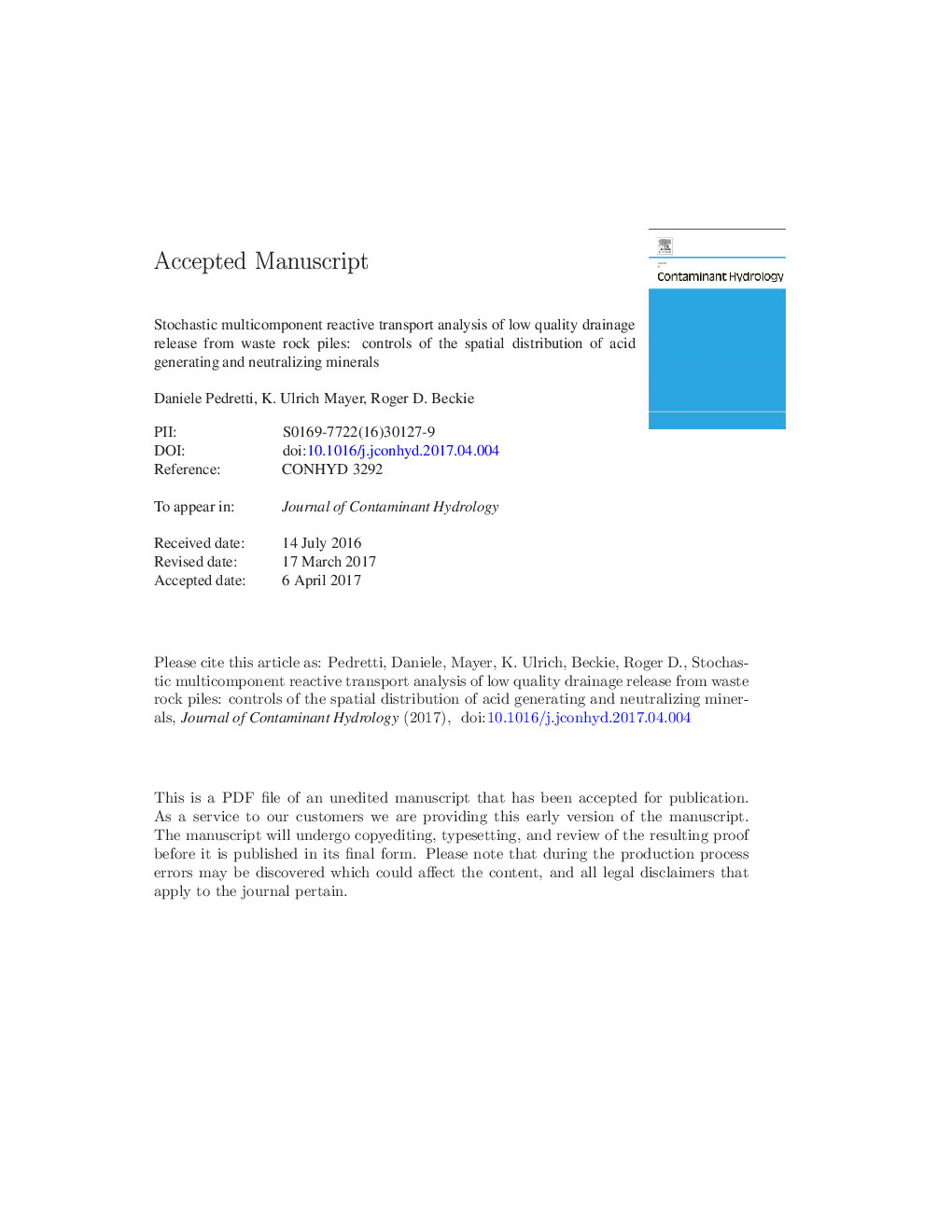| Article ID | Journal | Published Year | Pages | File Type |
|---|---|---|---|---|
| 5765877 | Journal of Contaminant Hydrology | 2017 | 35 Pages |
Abstract
In mining environmental applications, it is important to assess water quality from waste rock piles (WRPs) and estimate the likelihood of acid rock drainage (ARD) over time. The mineralogical heterogeneity of WRPs is a source of uncertainty in this assessment, undermining the reliability of traditional bulk indicators used in the industry. We focused in this work on the bulk neutralizing potential ratio (NPR), which is defined as the ratio of the content of non-acid-generating minerals (typically reactive carbonates such as calcite) to the content of potentially acid-generating minerals (typically sulfides such as pyrite). We used a streamtube-based Monte-Carlo method to show why and to what extent bulk NPR can be a poor indicator of ARD occurrence. We simulated ensembles of WRPs identical in their geometry and bulk NPR, which only differed in their initial distribution of the acid generating and acid neutralizing minerals that control NPR. All models simulated the same principal acid-producing, acid-neutralizing and secondary mineral forming processes. We show that small differences in the distribution of local NPR values or the number of flow paths that generate acidity strongly influence drainage pH. The results indicate that the likelihood of ARD (epitomized by the probability of occurrence of pH<Â 4 in a mixing boundary) within the first 100Â years can be as high as 75% for a NPRÂ =Â 2 and 40% for NPRÂ =Â 4. The latter is traditionally considered as a “universally safe” threshold to ensure non-acidic waters in practical applications. Our results suggest that new methods that explicitly account for mineralogical heterogeneity must be sought when computing effective (upscaled) NPR values at the scale of the piles.
Keywords
Related Topics
Physical Sciences and Engineering
Earth and Planetary Sciences
Earth-Surface Processes
Authors
Daniele Pedretti, K. Ulrich Mayer, Roger D. Beckie,
